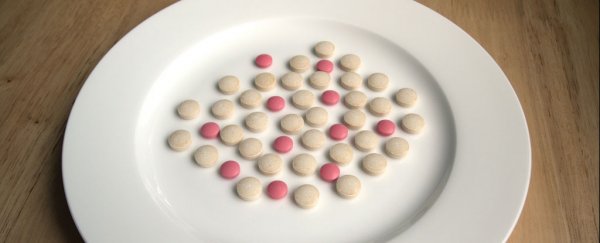In clinical trials designed to test the effects of drugs, researchers randomly assign one of two courses of treatment to study participants. The first group gets the experimental medication, and the second group (called the control group) is unwittingly given a placebo – a pill that intentionally does nothing at all.
The method is supposed to help researchers measure the effects of the real drug being studied, by distinguishing the effects of taking the medication from the effects of not taking it. Placebos have no inherent effect of their own, except for a phenomenon called the 'placebo effect' – in which some participants imagine they're getting the benefits of the real medication.
This happens because patients mistakenly believe they're taking the trial drug, unaware that they've been placed in a control group. What's amazing about the placebo effect is it can lead to actual physiological responses from the body – as if the patient had been taking a real drug all along – for which medical literature offers a range of possible explanations.
And it only gets weirder. A new study conducted by researchers at McGill University in the US has found that the placebo effect is actually getting stronger as the decades go by, fooling more people into perceiving illusory medical benefits that shouldn't be there at all.
Analysing the results of 84 clinical trials of drugs conducted around the world between 1990 and 2013, the researchers found that pain inhibition experienced by patients taking placebos in control groups increased steadily over the period, culminating in a 30 percent decrease in pain levels by 2013.
In other words, it's a better time than ever for patients to take completely fake pills, as our capacity to dupe ourselves into thinking we're taking the real thing is at an all-time high! But why?
The first factor to consider is that the researchers found this phenomenon is only occurring in the US. The placebo effect happens everywhere, but this documented increase in placebo responses has only showed itself in comparatively recent American clinical trials, with trials conducted in Europe and Asia revealing no such changes over the period.
The most likely reasons for the change are that trials in the US – but not elsewhere – are now being run for longer and also involve more people than they used to. Since 1990, the average clinical trial in the US has jumped from four weeks to 12 weeks long, and from fewer than 50 patients to over 500. These are big changes, and they seem to be having a significant effect on results.
"The data suggest that longer and larger trials are associated with bigger placebo responses," said Jeffrey Mogil, a professor of pain studies and senior author of the study. "This, in turn, tends to result in the failure of those trials – since it makes it harder for pharmaceutical companies to prove that the drug being tested is more effective than treatment with a placebo."
Other singular factors that may be causing increased responses to placebos in the US could be the effects of direct-to-consumer drug advertising (which only takes place in the US and New Zealand); the emergence of commercial research bodies; or greater exposure to the idea of placebos in the media, the researchers suggest.
In any case, it's something the medical industry will want to get on top of, as the move to conducting longer and larger drug trails – ostensibly for the purposes of testing efficacy – seems to be backfiring when it comes to getting new therapeutic solutions onto the market.
"The greater the improvement in patients treated with placebo in clinical trials, the more difficult it can be to demonstrate the beneficial effects of pain-relieving medications," said Robert H. Dworkin, a professor of anesthesiology, neurology, and psychiatry at the University of Rochester School of Medicine and Dentistry, who was not involved in study.
"This important study increases our understanding of these placebo-group responses, and thereby provides a basis for improving the design of clinical trials and accelerating the development of analgesic medications that can bring greater relief to patients suffering from chronic pain."
The research is published in Pain.
